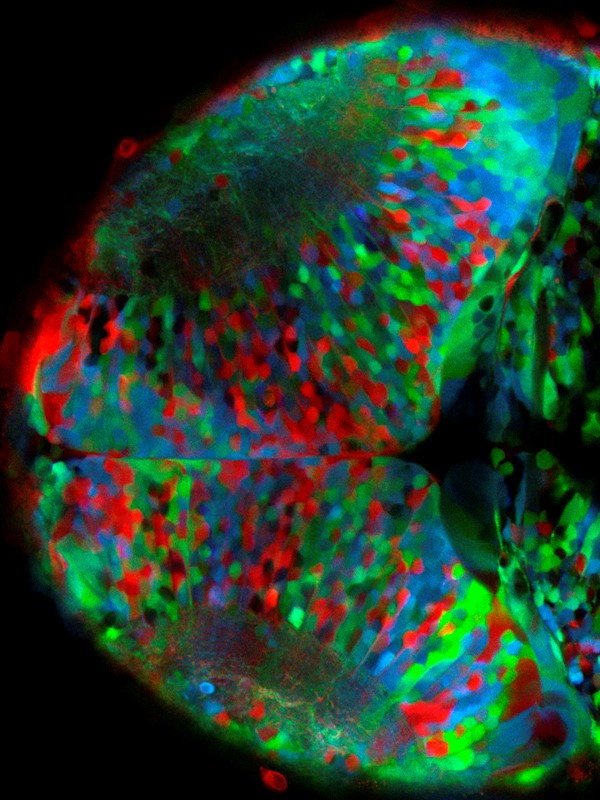Filippo Del BeneUnité de génétique et biologie du développement - Institut Curie / CNRS / Inserm / PSL
Mes recherches
My studies are focused in understandind the development and fucntion of thhe visual system using the zebrafish larvae as model system. I did my PhD thesis work at the EMBL in Heidelber under the supervision of After a PhD thesis (2000-2005) of prof. Joachim Wittbrodt, where I investigated the role of the transcription factor Six3 in controlling retina field specification during neural plate development. I did a postdoctoral work at UCSF in San Francisco in the group of Prof. Herwig Baier and I continued to investigate the processes that regulate retina development and neurogenesis. Here I developed also optogenetic applications to dissect the function of neural circuits in zebrafish. I started my independent team named “Neuronal Circuit Development“ at the institute Curie in Paris in 2010 with the ATIP-Avenir grant and I was recruited as CR1 INSERM researcher in 2011. Here I continued to investigate the molecular basis that control the development of neural ciruits in the visual system and the determine the visual behavioral response of the zebrafish larvae In 2019. I moved my team at the institute de la Vision in Paris creating the team “Development and Function of the Vertebrate visual System”.
Mon projet ATIP-Avenir
In vivo analysis of axonal transport andsynaptogenesis in zebrafish retinotectal projections
A major goal of modern neuroscience is the complete understanding of neuronal circuits development and function in an intact behaving animal. I plan to examine neural circuit formation and function in the visual system using in vivo time-lapse microscopy and novel “optogenetic” approaches to monitor and perturb neuronal activity.
I plan to investigate the axonal trafficking in vivo in the retinotectal neurons. The correct trafficking of macromolecular complexes and organelles along the axon is crucial to regulate several aspects of neuronal function, including neuronal survival, axon branch extension, and synaptogenesis. Kinesin superfamily proteins (KIFs) and cytoplasmic dynein/dynactin complex are the microtubule-associated molecular motors that drive axonal transport.
A second part of the project will investigate the role of spontaneous neuronal activity in the assembly of the retinotectal connections. Previous studies using pharmacological tools both in vivo and in in vitro cell culture assays have shown the role of neuronal activity in controlling axonal braches dynamics and synaptogenesys. On one hand axons compete with each other in an activity dependent manner and this results in reduced branches extension. On the other hand, axons that have reduced synaptic efficiency, compensating for it extending longer branches where more synapses can be located, in a homeostatic mechanism. I plan to dissect apart these two opposite contribution of neuronal activity in neuronal circuit development using novel “optogenetic” tools that I have applied to the zebrafish system and showed that can be efficiently used to alter neuronal activity.
Finally part of the effort of the lab will be directed to the development of novel techniques and resources presently missing in our system.
Filippo Del Bene est également lauréat ERC Starting Grants 2012

